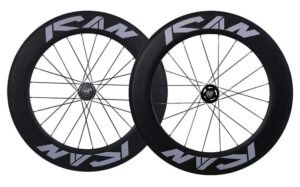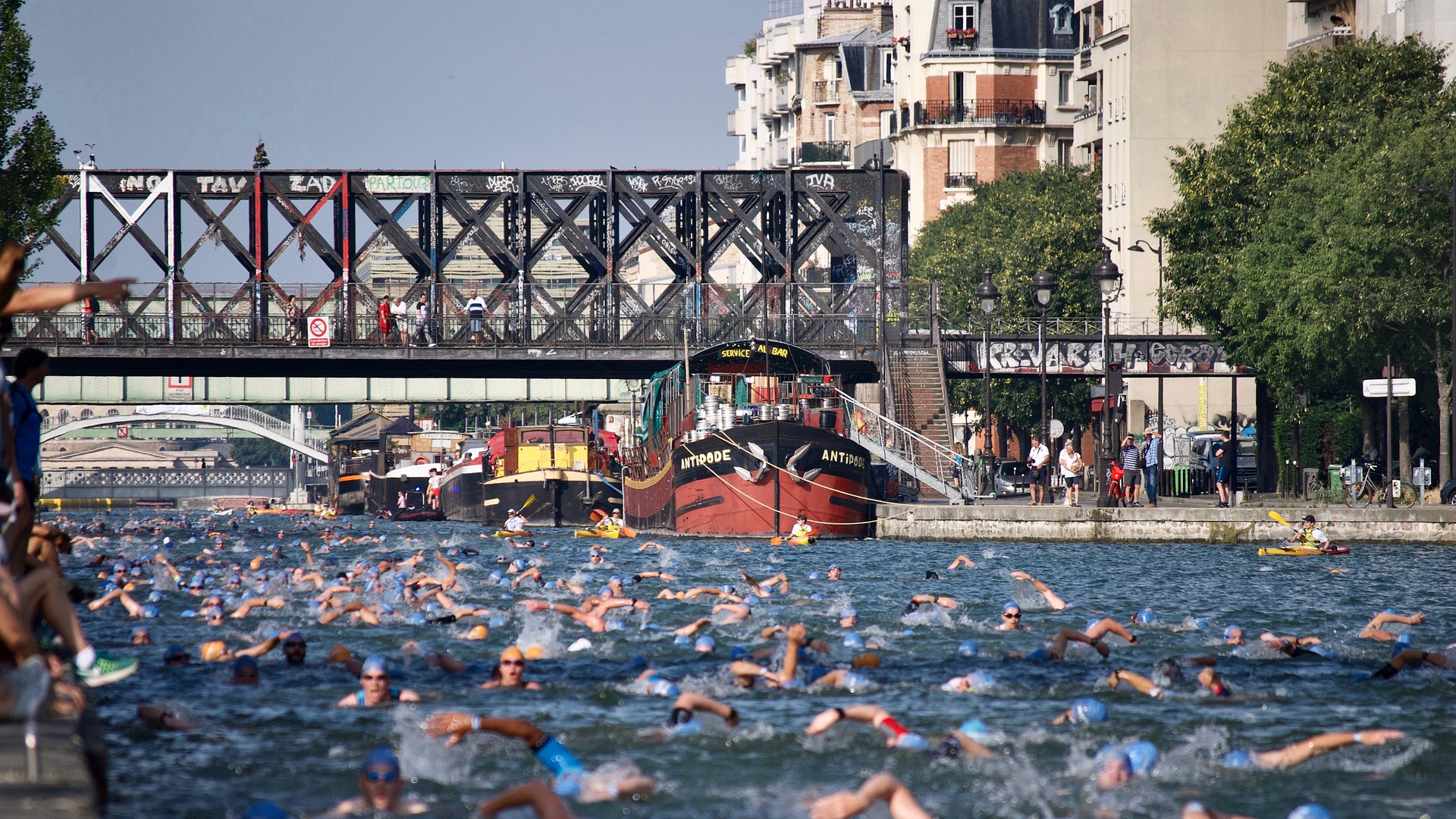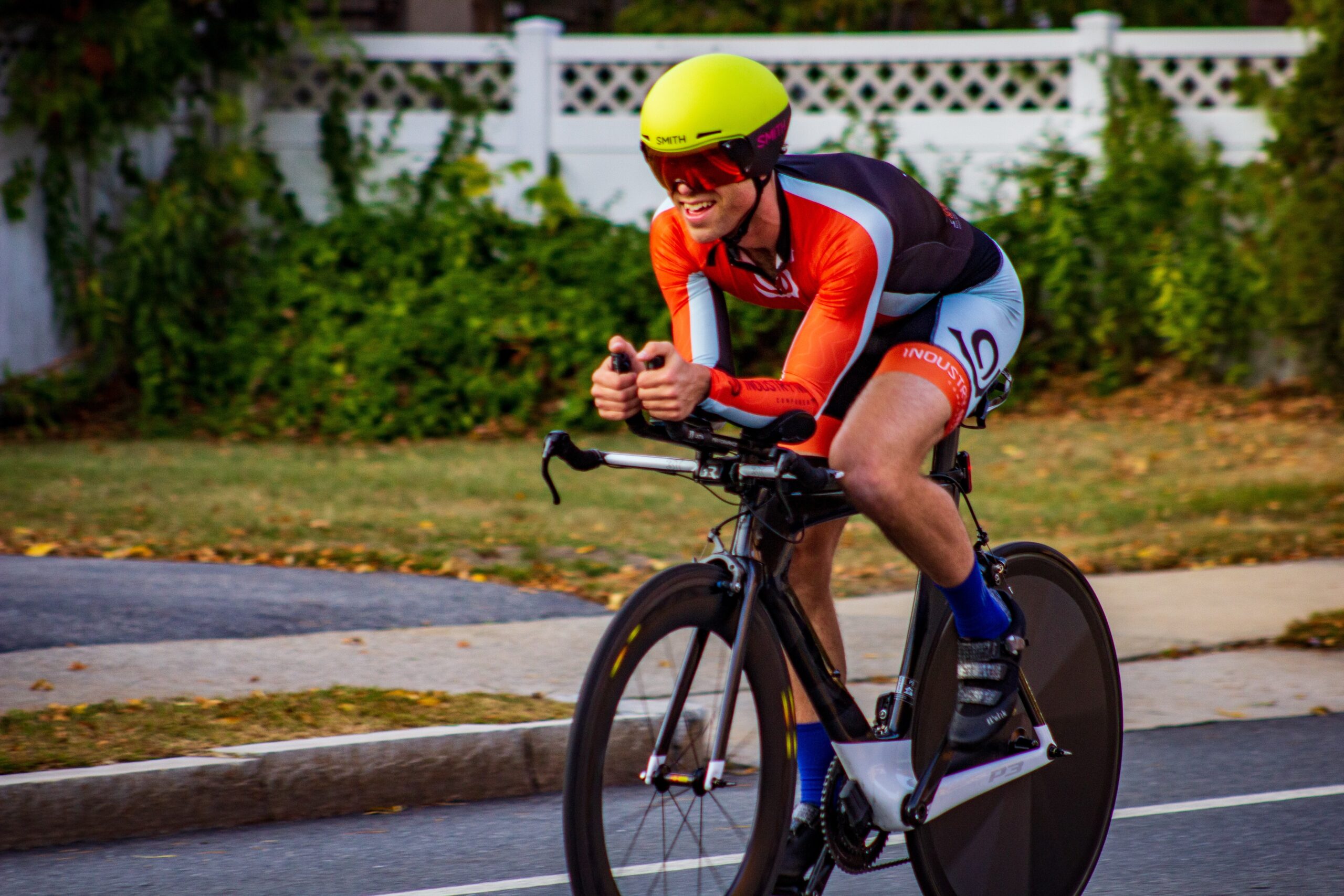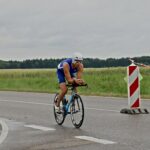Performance slumps are one of the most common, yet mysterious and frustrating, phenomena in triathlon. Typically viewed as unexplained drops in performance, slumps are a source of concern for triathletes and coaches alike. Despite its visible place in the collective psyche of the triathlon community, little is known about the causes or cures for performance slumps. However, I have worked extensively with triathletes who are suffering from performance slumps and I will share with you how triathletes and coaches can identify, prevent, and overcome slumps.
What is a Slump?
Slumps are used to describe a wide variety of performance declines. As a result, there has been no clear definition of what a slump really is. For example, Webster’s New Collegiate Dictionary defines a slump as “a period of poor or losing play by a team or individual.” However, this definition lacks precision. Several factors must be considered in defining slumps. First, current level of performance must always be  compared to a previous level. For example, if your bike wattage is down 10% for no obvious reason, you may be in a slump. Second, the length of the decline is relevant. For example, if your running pace declines for a few days, you’re probably not in a slump, but if the decline is still there after 10 days, you’re likely in a slump. Third, a common aspect of a slump is that there seems to be no apparent explanation for the decline. If there is an obvious reason for the drop in performance, such as an injury or illness, then it would not be a slump. In defining a slump, these factors must be taken into consideration. As a result, a slump is presently defined as: An unexplained drop in performance that extends longer than would be expected from normal ups and downs of triathlon training and racing.
compared to a previous level. For example, if your bike wattage is down 10% for no obvious reason, you may be in a slump. Second, the length of the decline is relevant. For example, if your running pace declines for a few days, you’re probably not in a slump, but if the decline is still there after 10 days, you’re likely in a slump. Third, a common aspect of a slump is that there seems to be no apparent explanation for the decline. If there is an obvious reason for the drop in performance, such as an injury or illness, then it would not be a slump. In defining a slump, these factors must be taken into consideration. As a result, a slump is presently defined as: An unexplained drop in performance that extends longer than would be expected from normal ups and downs of triathlon training and racing.
“When you’re in a Slump, you’re not in for much fun. Un-slumping yourself is not easily done.” Dr. Seuss
Identifying a Slump
An inherent part of triathlon participation is that performance will vary naturally during a season. In other words, it is rare for triathletes to maintain a consistently high level of performance. As a result, most performance declines are simply a typical part of the normal ups and downs of our sport. So, the question is whether a decline is a slump or just a natural drop in the performance cycle.
The first step in determining whether a decline is a slump is to evaluate your average level of performance. That is, how do you usually perform? For a data-driven sport such as triathlon, this can be measured by plotting performance to date (e.g., time, distance, wattage, HR) on a graph. Then, normal variation can be determined by seeing the ups and downs that commonly occur during the season. Next, recent performance can be compared to the normal variation. If the current decrease is unusually low, it may be a slump. Finally, a superficial look at the causes of the decline should be done. For example, have you been sick or injured, are you under unusual stress in your life, have you been devoted more of your time and attention to other aspects of your life, have you been less committed to your training? If there is no obvious cause of the drop in performance, it is safe to say that you are in a slump.
performance can be compared to the normal variation. If the current decrease is unusually low, it may be a slump. Finally, a superficial look at the causes of the decline should be done. For example, have you been sick or injured, are you under unusual stress in your life, have you been devoted more of your time and attention to other aspects of your life, have you been less committed to your training? If there is no obvious cause of the drop in performance, it is safe to say that you are in a slump.
Causes of Slumps
The causes of performance slumps can be grouped into four general categories. First, perhaps the most common cause of slumps is a physical problem. These difficulties include fatigue, minor injuries, and lingering illness that aren’t that noticeable. Second, slumps may be due to subtle changes in swim technique, body position, or stride that go unnoticed.
 Third, slumps may begin with changes in your equipment, for example, a change to a new wetsuit, a change in your bike fit, or worn-out running shoes. Given the complexity of triathlon, a slight change in one area can have a subtle, yet impactful, effect on your performances on the swim, bike, or run.
Third, slumps may begin with changes in your equipment, for example, a change to a new wetsuit, a change in your bike fit, or worn-out running shoes. Given the complexity of triathlon, a slight change in one area can have a subtle, yet impactful, effect on your performances on the swim, bike, or run.
Fourth, slumps can be caused by psychological factors. Furthermore, the mental contributors may be grounded in or separate from your triathlon life. For example, a particularly poor performance may hurt confidence and increase anxiety, which could lead to a prolonged drop in performance. In contract, issues away from triathlon such as family difficulties and work or school pressure may increase stress, decrease motivation, and cause distractions, thus resulting in a performance decline.
Recommendations for Preventing Slumps
The best way to deal with slumps is to prevent them from happening. Slumps can be prevented by paying careful attention to the potential causes of slumps and taking steps to avoid them.
Physical
As discussed above, many slumps begin with physical difficulties. More specifically, slumps are often caused by the normal physical wear-and-tear of training the triathlon season that aren’t as noticeable as injuries or illness. As a result, you can reduce the likelihood of performance slumps by paying attention to various factors that influence your physical state.
One important area that can be addressed is physical condition. Quite simply, if you are well-conditioned, you will be less susceptible to fatigue, injury, and illness. Consequently, a rigorous off-season physical training program and a race season physical maintenance program will help minimize slumps due to physical breakdown.
Second, a significant part of slump prevention is rest. In other words, physical deterioration can be lessened by actively incorporating rest into your training and race regimens. Adequate rest can be assured in several ways. Sleep is absolutely essential for recovery and an intense conditioning program requires 1-2 more hours of sleep a night compared to more sedentary sleep needs. Also, days off can be built into your weekly training schedule. For example, in triathlon with weekend races, having mandatory Mondays off is a good way to ensure that you can recover from the prior week’s training and the stresses of the previous days’ race. Lastly, listening to your body is crucial to preventing slumps. For example, if you are generally very motivated to train and you don’t feel like doing a workout, your body might be telling you that it needs more rest.
 Third, you can reduce the quantity and increase the quality of training as the season progresses. This approach, referred to as periodization, will allow you to maintain a high level of health and energy right through the end of the season. This is especially important in triathlon in which the race season can last eight to nine months a year.
Third, you can reduce the quantity and increase the quality of training as the season progresses. This approach, referred to as periodization, will allow you to maintain a high level of health and energy right through the end of the season. This is especially important in triathlon in which the race season can last eight to nine months a year.
Fourth, planning a responsible race schedule can also prevent slumps. Perhaps the most demanding aspect of triathlon involvement is the actual race. Competing in too many events is both physically and mentally draining for you. As a result, you should be selective in what races are most important for you and to avoid scheduling events that serve no specified purpose in your seasonal goal plan.
Fifth, scheduling time off about three weeks before an important race, particularly when it is towards the end of the season, can help to ensure a high level of performance. This strategy allows you to get extra rest, recover from previous races, overcome nagging injuries and illness, recharge mentally and emotionally so you enter the big event excited to compete, and prepared for the final push toward that race.
Most fundamentally, the best way to reduce the likelihood of a slump due to physical causes is for you to listen to your body. You need to acknowledge fatigue, injury, and illness and when any are evident, they should be dealt with immediately.
Technical
Slumps that are caused by technical changes(most common in swimming) can also be prevented by taking steps to maintain sound technique which results in strong performance. First, technique is best developed during the off-season when the primary focus is on technical improvement and there is adequate time to fully acquire the skills. As a result, technically-induced performance slumps may be prevented by minimizing work on new technique during the race season. At the same time, a consistent regimen of drills will keep you focused on good technique and ensure that your body doesn’t acquire bad technical habits due to fatigue, injury, or sloppiness. In addition, maintaining a video library of good technique and performances can be used by you to remind yourself of proper technique and to compare current with past technique.
Equipment
The best way to prevent equipment-related performance slumps is to maintain your bike and running shoes at their highest level of functioning. You should pay attention to how many miles you’re accumulating on your running shoes and any changes to your bike fit that might occur (e.g., after flying with your bike).
Mental
Performance slumps that are caused by psychological factors can be addressed at two levels. First, for those difficulties that arise directly from triathlon, it is important that you engage in a regular mental training program. This approach will strengthen your mental muscles, including motivation, confidence, intensity, focus, and mindset, thereby making them more resilient to the negative psychological effects of periodic poor performance. A structured mental training program will also ensure that you have a well-stocked mental toolbox filled with tools that are readily available to fix any issues that arise. In addition, following a poor performance, you will need to actively combat the resulting negative psychological effects by flexing your mental muscles and using these mental tools. This will prevent you from getting caught in a self-perpetuating vicious cycle of negativity and poor performance, which will lead to a slump.
Second, for those difficulties that occur away from triathlon, you should work them out as quickly and effectively as possible. Whether, for example, family conflict or difficulties work, actively seeking out support and finding solutions can reduce their impact on your triathlon life. In addition, you can use the previously-discussed mental muscles and tools to keep these difficulties away from your triathlon life, so that, at least during training and races, you are able to maintain your productive frame of mind, prevent a drop in performance, and maintain your tri-mojo from the start to the finish of your season.
Do you want to take the next step in training your mind to perform your best in training and on race day? Here are five options for you:
- Read my Triathlon blog.
- Listen to my Train Your Mind for Athletic Success
- Read my latest mental training book: Train Your Mind for Athletic Success: Mental Preparation to Achieve Your Triathlon Goals.
- Take a look at myonline mental training courses.
- Schedule a 1:1 session with me.







